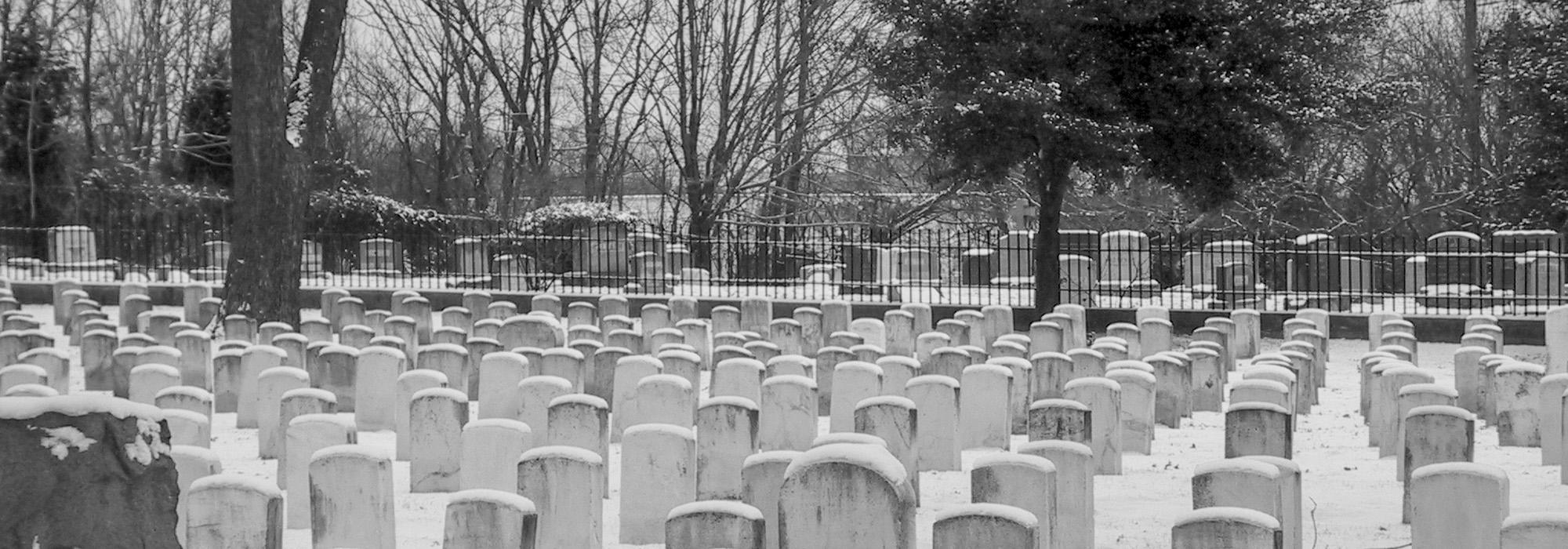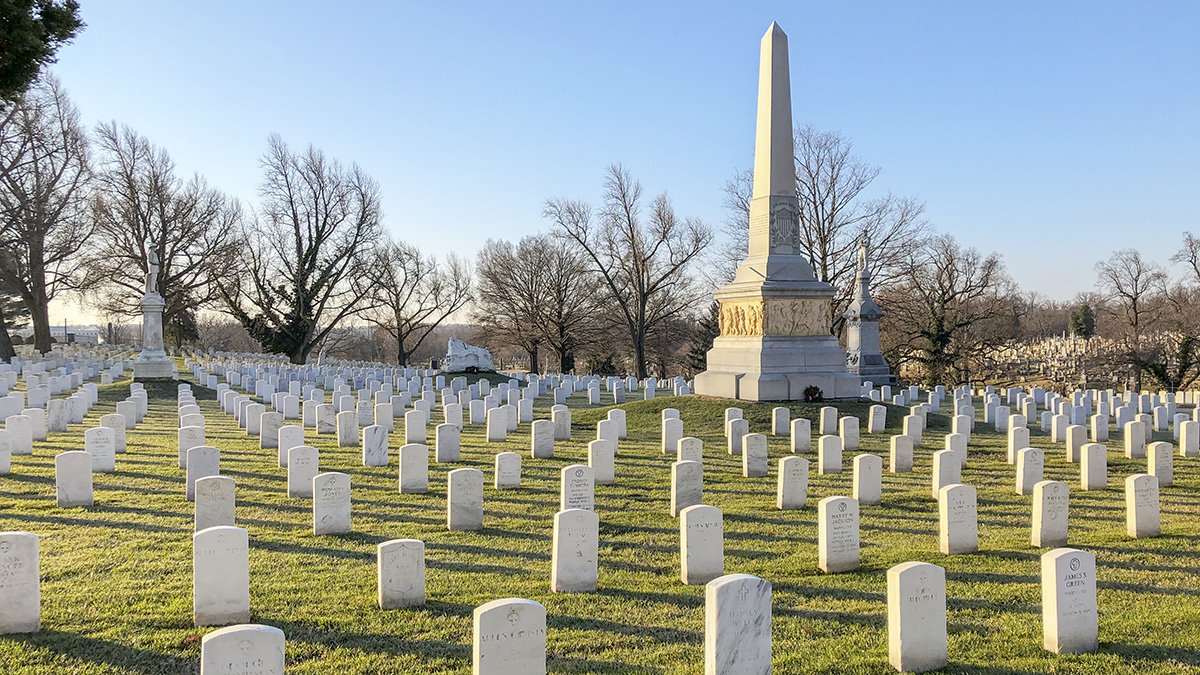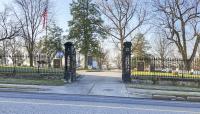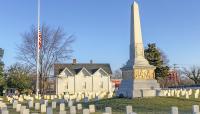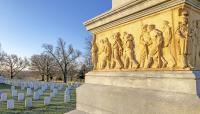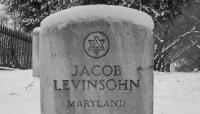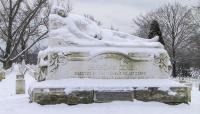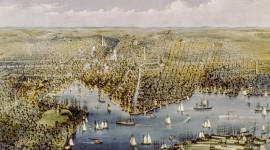Landscape Information
Located approximately five miles west of Baltimore, this site was originally part of local merchant James Carey’s Loudon Farms estate and became one of the fourteen original national cemeteries established under the National Cemetery Act of 1862. Baltimore played a prominent role during the Civil War as a major port and the host of Union military camps, hospitals, and forts, and the need for burial grounds became apparent early in the conflict. Only 1.16 acres when it was first established, Loudon Park National Cemetery was expanded near the end of the nineteenth century and now covers some 5.28 acres.
The cemetery is entered along Frederick Avenue and is located within the eastern extent of the larger Loudon Park Cemetery, occupying hilly terrain that gradually slopes from east to west. The cemetery is enclosed by a combination of low walls and wrought-iron fencing; groups of mature trees line the northern edge of the site and continue along the main drive, eventually wrapping around the southernmost burial sections. Uniform, upright grave markers are oriented on a grid with the cemetery’s primary drive, which runs on a north-south axis. This highly structured arrangement stands in contrast to the surrounding Loudon Park Cemetery, which is laid out in the rural cemetery style. Six commemorative monuments are placed near the center of the grounds. A superintendent’s lodge, designed by Quartermaster General Montgomery Meigs, was constructed in 1870. The cemetery is the final resting place of more than 7,100 soldiers, including approximately 200 reinternments of African American soldiers from Laurel Cemetery and 35 Confederate soldiers. Loudon Park National Cemetery was listed in the National Register of Historic Places in 1996.



